*Good To Know*
- What is Milk Bread? With a name like Milk bread, it’s obvious that milk is the dominant ingredient in this recipe. The fat derived from milk replaces the need to incorporate butter (although I have seen recipes that include both butter and milk). Some prefer to use heavy cream and milk, others only use milk. The end result is a rich and pillowy bread texture that has a softer crust with a slight chew. It’s delicious on its own but also versatile for sweet and savoury fillings. This type of bread keeps a little longer and even contributes more nutrients thanks to the addition of milk and instant milk powder. It’s different from other types of bread due to the use of milk rather than water, however, the process of making and proofing dough is the same.
- Why use room temperature dairy ingredients? It makes a big difference using dairy at room vs. cold temperature. When mixing ingredients at room temperature the batter or dough will mix/blend together better for a smoother batter or pliable dough without clumping. Plan ahead and leave ingredients on your counter overnight or at least 1 hour ahead. Pro Tip: Forgot to set out eggs? Place uncracked eggs into a bowl and soak in hot tap water for 10 minutes to bring to room temperature. How about butter? Remove from wrapper, place on microwave safe dish and use ‘defrost’ feature to soften butter 15 seconds at a time until butter is soft to touch (not melted). Milk? Microwave for 15 seconds at a time until room temperature is reached (should be mildly warm to touch).
- Do I need to sift my flour? It’s not mandatory but recommended. Commercial flour is refined enough that you won’t need to do this. I don’t always sift flour depending on the recipe. However, it does help break up any lumps, filter ‘dirt’ (like leftover husks or seeds that may not have been refined) and aerates the flour to help with mixing the rest of the ingredients
- Instant yeast vs. Active dry yeast What’s the difference? Instant yeast (aka. rapid rise or quick rise) does not need to be dissolved in water and can be mixed right into your dry ingredients (usually smaller in granules too). Active dry yeast does need to be dissolved in water first (with added sugar to help ‘feed’ the living organism to activate the yeast)
- How should I store left over buns? Store left over buns in an airtight container or resealable bag in the refrigerator up to 4 days or 6 weeks in the freezer in plastic zipppered bags. To reheat refrigerated buns, heat in microwave for 1-2 minutes (microwave cook times vary, reheat 1 minute at a time). If reheating from frozen, place frozen buns into a steamer and steam for approx. 5 to 7 minutes until soft and hot or reheat in the microwave for 3 minutes (or additional minutes if required).
To ensure a smooth baking experience, I highly recommend you read through all of my tips and instructions before starting. This will help you prepare your ingredients and equipment ahead of time for a fail-proof-less-frustrating method of making these delicious buns. Most importantly, have fun!! I personally find kneading and filling dough so satisfying and therapeutic!
For the dough, you will need the following ingredients:
1. Flour – Bread and Cake flour are blended for an ultra soft bun. Use the exact blend if you are making this for the first time since it has already been tested in my kitchen. If you prefer to substitute the flour, see my guide below for flour and milk measurements (follow the rest of the recipe as normal).
a) If you don’t have bread flour , use:
– 4 cups all-purpose flour
– 1 cup cake flour
– 1 ½ cups milk
b) If you don’t have cake flour, use:
– 3/4 cups all-purpose flour
– 4 cups bread flour
– 1 ²/3 cups milk
c) If you prefer to use all-purpose flour for the entire dough recipe, use a total of 4 ¾ cups all-purpose flour with 1 ½ cups of milk.
Why are the measurements different above you might wonder? Depending on the type of flour you choose, it may need more (or less milk) because of the protein content. The higher the protein content in the flour, the more liquid is needed. While kneading dough, if it’s sticky to touch, add 1 tablespoon of flour at a time until the dough does not stick to your finger anymore. Too dry? Add 1 tablespoon milk at a time until it is pliable but does not stick to your finger.
2. Milk – Use 3.25% homogenized milk since the high fat content helps substitute the lack of butter for ultra softness in the dough.
3. Instant Milk Powder – I only had skim milk powder on hand but regular or skim milk powder can be used. I added this to help enhance the dough with its soft texture further and add more flavour to our milk bread.
4. Yeast – What is yeast? How do I know if yeast is still alive?
It’s a valid question I get asked often. Yeast is a leavening agent and is usually available as two types. One type is an Active Dry Yeast (larger dormant granules). Before it can be used in a recipe, it needs to be ‘activated’ or ‘proofed’ by dissolving it with warm water and sugar (think of it as waking the yeast up). It’s ready when bubbles form and can then be mixed into other ingredients.
A second type is known as Instant Yeast. The granules are smaller and do not need to be activated or proofed with sugar and water. It can be mixed directly into your other ingredients and is usually the preferred type since it’s more powerful and easier to use. Always store yeast in the refrigerator to prolong its shelf life .
So how do you know if it’s still alive? To test, add 1 teaspoon of sugar with 1 envelope of yeast (2 1/4 teaspoon) to a small bowl and mix 1/4 cup of warm water (not hot since that will kill the cells). If bubbles form, your yeast is still active. If no bubbles form, do not use it! Save yourself the frustration and buy new yeast!
How do I make a good yeast dough that rises every time?
The secret to making a great rising dough? Use working yeast that’s still active, knead dough long enough for gluten to develop AND rise dough in the right temperature.
Believe it or not, that’s the secret. The best kneading time (via standmixer) is 15 minutes. Uninterrupted kneading time. This is key to help dough develop gluten. If kneading by hand, 25 minutes minimum.
Depending where you live, room temperature can vary and affects the way our dough rises. Rather than guess if your room temperature is good enough, preheat your oven to the lowest possible temperature. This is usually 170° F (76.7° C). If you have a ‘bread proof’ feature available, set your oven to this. The key is to create a warm environment in order to incubate our dough. By preheating your oven, you have better control of the dough’s ability to rise in the right temperature. If preheating your oven manually, place dough in your oven and turn the heat off. Leave the door closed (no peeking!) until rise time is done. If using bread proof feature on your oven, you can keep this on while dough rises.
How to make the curry beef filling for buns
Make your filling ahead of time. Give your filling enough time to cool down in the fridge for 1 hour or even overnight. Working with a cold filling will help you shape your buns better without worrying about excess sauce dripping out of your dough while you work (I made mine the night before).
Pro Tip: When chopping vegetables, dice them the same size as best you can. This will help cook them evenly.
How to shape and fill the buns
Flatten each dough ball with the rolling pin to 1 cm in thickness and 5 inches in diameter (should be the size of your palm). Place 2 or 3 tablespoons (generously) to the center of your flattened dough. Pinch all sides together and twist to seal the bun. Place the seam side down on a baking tray lined with parchment paper and cover the bun with a clean dish towel while you work. Buns should be 2 inches apart on the tray in order to leave room for them to expand during a second proofing time. Ensure your oven is preheated once more to 170°F (76.7°C) and turn the oven off after placing your covered tray for a second rise (30 minutes) or continue to use the ‘bread proof’ feature’ for the second rise.
Your buns will double in size and are now ready to bake. Remove trays of buns from oven. Preheat oven to 350°F (176.7°C). In the meantime, beat 1 large egg in a small bowl and mix in 1 tablespoon of water. Use a pastry brush and gently brush egg mix evenly over buns to cover the entire surface. This mix will help buns bake with a beautiful glossy finish. Bake buns for 20 minutes until golden brown.
Soft Curry Beef Buns
Ingredients
Filling
- 2 Tablespoons vegetable oil
- 2 cups yellow onion (1 large), peeled & diced
- 2 pounds lean ground beef
- 2 cups carrots (3 large), peeled & diced
- 3 cups yellow potatoes (3 large), peeled & diced
- 2 cups frozen green peas
- 1 large white or yellow onion, diced
- 4 Tablespoons curry powder
- 1 Tablespoon sea or kosher salt
- 1 teaspoon ground mustard
- ½ teaspoon ground coriander
- ½ teaspoon ground turmeric
- 2 Tablespoons brown sugar
- ¼ cup water
Cornstarch Slurry
- 2 Tablespoons cornstarch,
- 3 Tablespoons water
Dough
- 4 cups bread flour, sifted
- 1 cup cake flour, sifted
- ⅓ cup white sugar
- 2¼ teaspoon quick rise or instant yeast, (1 envelope)
- 2 Tablespoons instant skim milk powder (with vitamin A & D)
- 1½ teaspoon sea salt
- 1⅔ cup whole Milk (3.25% homogenized), room temperature
- 1 large egg, room temperature
Egg wash
- 1 large egg, beaten
- 1 Tablespoon water
INSTRUCTIONS
Filling
- In a large non-stick skillet, heat vegetable oil on high heat. Add diced onions, cook until soft and translucent. Add ground beef and continue to sauté meat for 4 minutes (should be slightly undercooked beef). Scoop meat into a large bowl, set aside and place skillet back on stove top on high-heat.
- Add diced potatoes to skillet, cook for 3 minutes then add diced carrots and continue to sautée for another 3 minutes. Reduce heat to medium high. Add cooked ground beef back into skillet, add salt and mix to combine. Add curry powder, ground mustard, ground turmeric and brown sugar. Continue to stir for 3 minutes. Add frozen peas, 1/4 cup water and continue to mix for another 5 minutes.
- In a small bowl, mix together cornstarch and water. Pour cornstarch slurry into meat and continue to cook meat filling for 2 minutes or until cornstarch has thickened. Transfer filling to a large bowl and set aside to cool for 10 minutes. Cover with cling wrap and place in fridge for 1 hour.
Dough
- If your oven has a "Bread Proof" feature, start it before you begin. If not, set oven to lowest temperature possible (usually 170°F or 76.7°C) to preheat oven.
- In a large mixing bowl whisk together cake flour, bread flour, sugar, instant yeast, instant skim milk powder and sea salt. Add half of this flour mix into the bowl of a stand mixer with paddle attachment.
- On low speed, slowly pour in milk until flour and milk are combined. Add 1 egg and continue to mix on low until egg is incorporated. Switch to dough hook, add remaining flour mix and knead dough on low for 5 minutes then increase speed to medium-low speed. Knead dough for 15 minutes. (not less). If mixing by hand, knead for 25 minutes. Mix in 1 tablespoon cake flour if dough appears too sticky to touch or knead in 1 tablespoon milk if dough appears too dry. Dough should be pliable but not stick to bowl.
- Shape dough into a ball. Place into a greased bowl or add 1 tablespoon vegetable oil to mixer bowl and roll dough ball around to coat oil evenly. Cover bowl with plastic wrap loosely and place a clean tea towel on top. Place bowl in oven with "bread proof" heat still on. If oven is set to 170°F manually, turn oven off and leave door closed until proof time is done (no peeking!). Set timer for 1h.
Buns
- After 1 hour of proofing, leave 'bread proof' heat on or manually turn oven back on to 170°F (76.7°C). Gently punch down dough with fingers to release gas bubbles formed by yeast. Use a food scale to weigh total weight of dough in grams (mine was 1187 g). Divide this total weight by 20 and write down the result (59 g). This is the weight of each dough ball needed for 20 buns.
- Dust flour on a clean work surface, knead dough for 1 minute and roll into a long, even log. Use a sharp knife or pastry scraper to divide log into 20 equal pieces. Weigh each dough piece and add or subtract dough to ensure total weight equals weight we just calculated in step 1 for each ball (59 g). Knead and shape into a ball. Cover with a clean, dry cloth (to prevent dough from drying).
- Line 2 baking trays with parchment paper. Dust rolling pin with flour (and work surface if more is needed), roll out dough ball into a medium disc about 5 inch in diameter and 1 centimeter in thickness. Place disc into the palm of your hand, add 2 to 3 tablespoons of meat filling to center of dough, lift dough around the edges, pinch together and slightly twist to seal. Place bun with sealed side down on tray. Cover with dish cloth while you continue to work.Repeat this step until all dough balls are shaped and filled into buns. Place each bun 2 inches apart on tray. Cover trays with dish cloth and place into oven for a second rise for 30 minutes with bread proof feature on or 170°F warmed oven.
- Remove trays from oven when 2nd proofing is done. Preheat oven to 350°F (176°C). Combine 1 large beaten egg and 1 tablespoon water together. Gently, brush egg wash with pastry brush over each bun. Bake buns for 20 minutes or until golden brown. Allow to cool on a wire rack for 10 minutes. Enjoy!





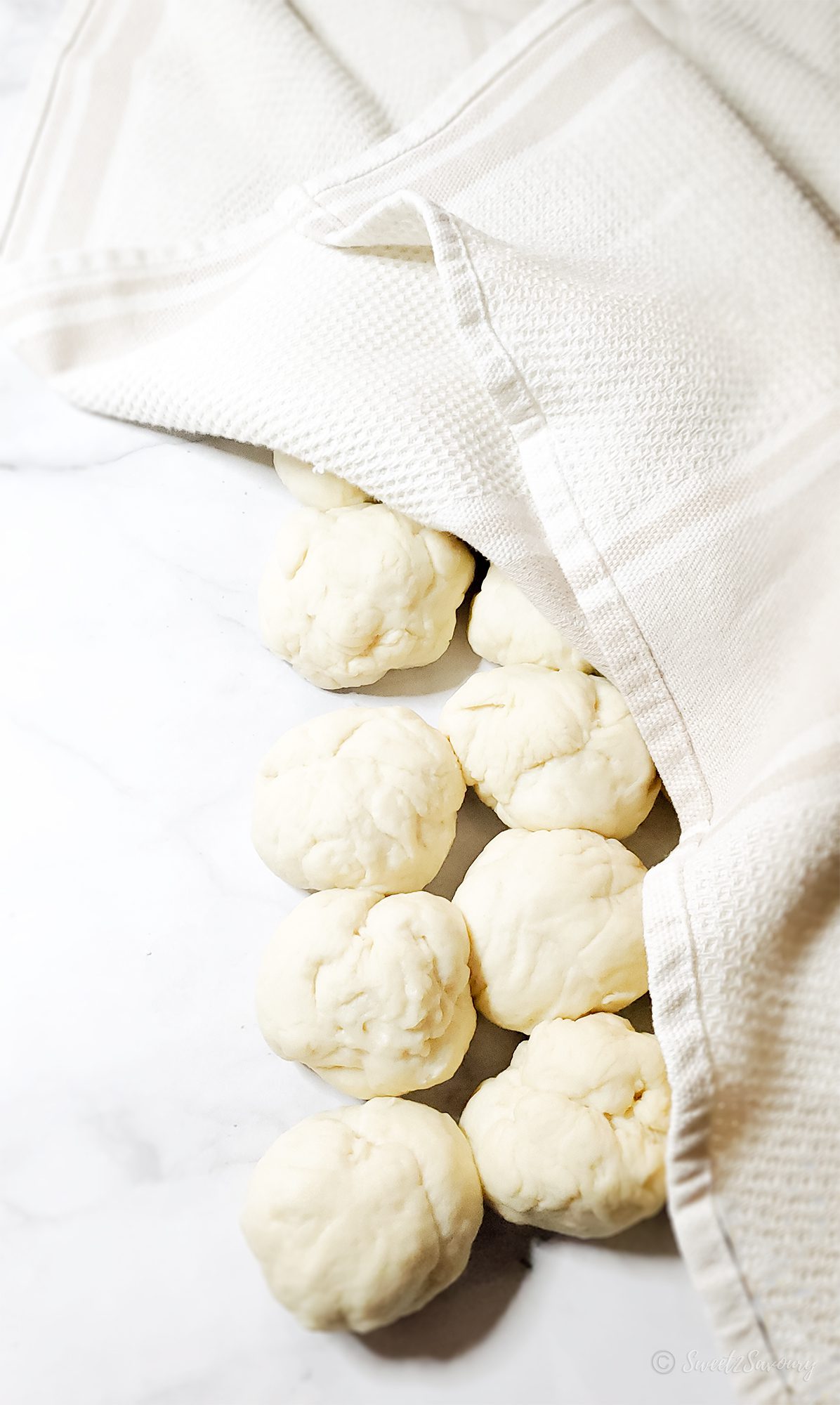
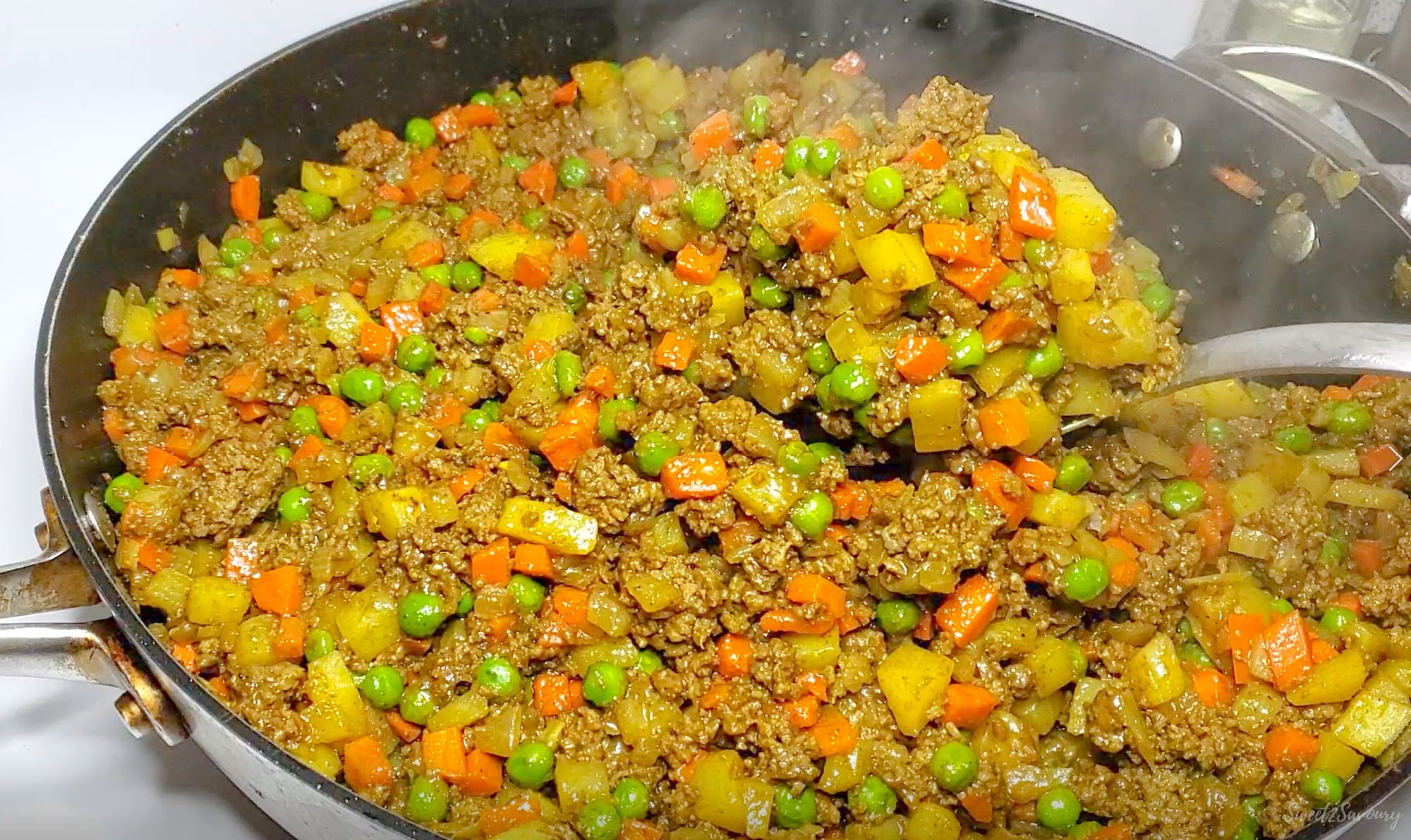
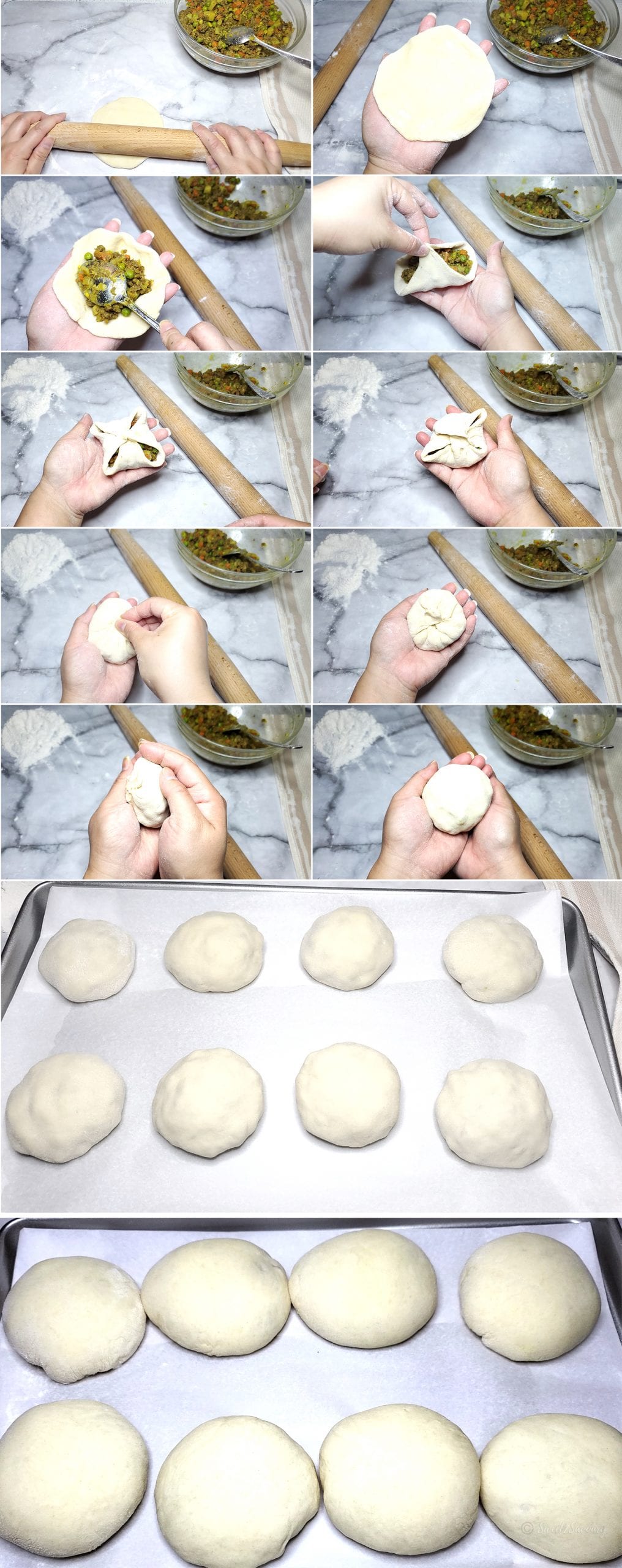

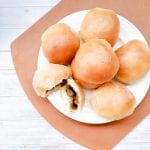

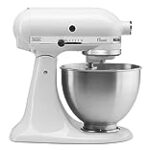
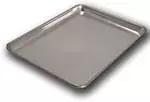

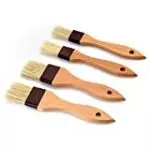
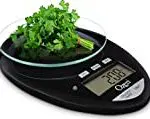
If you enjoyed my recipe, please leave a comment or rate it below. Also don’t forget to follow me on my social media channels (YouTube, Pinterest, Facebook, Instagram) to keep up with my latest kitchen shenanigans.